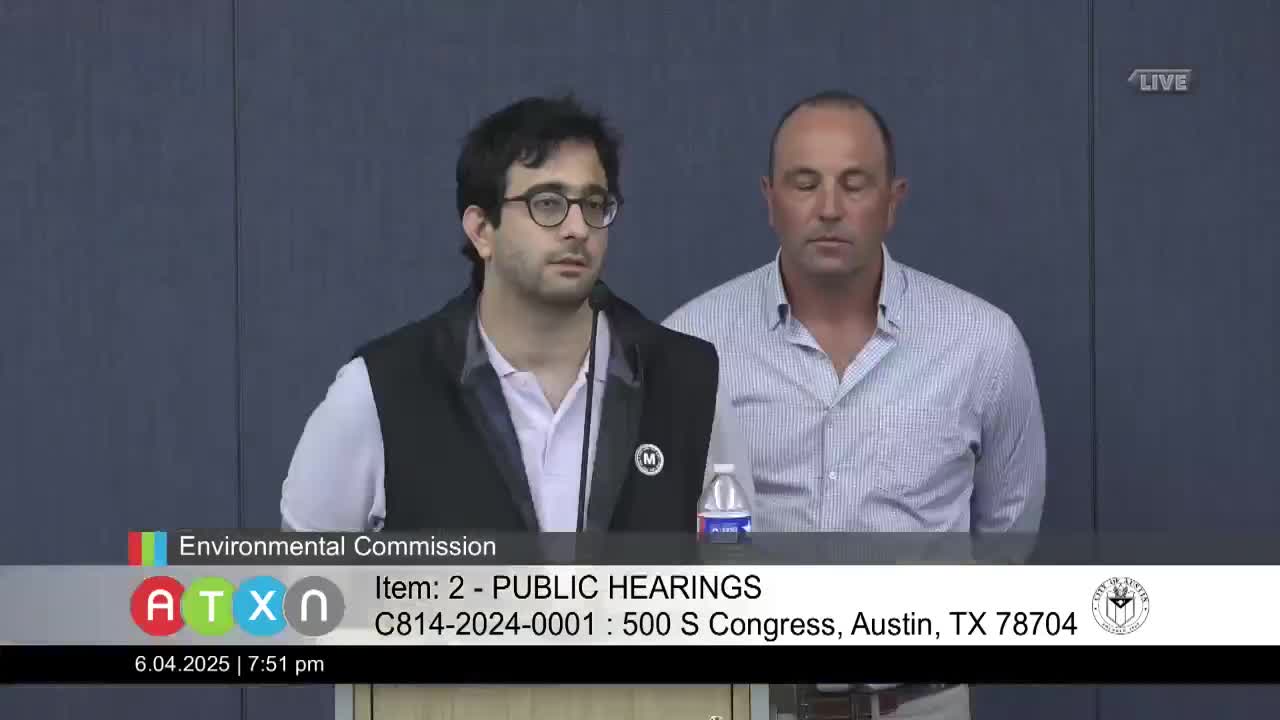Design Team considers green infrastructure and community gardens for Austin project
June 04, 2025 | Austin, Travis County, Texas
This article was created by AI summarizing key points discussed. AI makes mistakes, so for full details and context, please refer to the video of the full meeting. Please report any errors so we can fix them. Report an error »

The Austin Environmental Commission meeting held on June 4, 2025, focused on several key topics related to urban development and environmental sustainability. The discussions highlighted the importance of integrating green infrastructure into the city’s planning efforts, particularly in high-density urban areas.
The meeting began with a review of potential design elements for upcoming projects, including green walls and permeable materials. Participants emphasized the need to balance environmental considerations with cost factors, particularly in floodplain areas. Concerns were raised about the stability and longevity of materials used in construction, especially in relation to freeze-thaw cycles.
A significant point of discussion was the preservation of heritage trees during development. It was confirmed that a percentage of these trees would be preserved on-site, addressing community concerns about environmental impact. The commission also explored the potential for carbon sequestration through planting and restoration efforts near creeks, although specific calculations regarding the net carbon footprint of the proposed developments had not yet been completed.
The idea of incorporating community gardens into the development plans was met with enthusiasm. Participants discussed the benefits of such spaces for local residents, particularly in providing affordable food access and enhancing community engagement. The integration of composting initiatives was also suggested as a way to promote sustainability.
Another noteworthy topic was the possibility of obtaining Texas wildlife certification for restoration areas, which would support biodiversity and provide food access for wildlife. The design team expressed openness to this idea, citing previous successful projects that included community gardens and even urban farming initiatives.
Safety concerns for children attending a nearby school were raised, particularly regarding pedestrian access routes. The commission acknowledged the need for careful planning to ensure safe pathways for students, especially those with disabilities.
Finally, the meeting concluded with a commitment to support local independent businesses within the retail spaces of new developments. The commission emphasized the importance of maintaining affordable rent for these businesses to ensure their viability and contribution to the local economy.
Overall, the meeting underscored a collaborative approach to urban planning, with a strong focus on environmental sustainability, community engagement, and support for local businesses. The commission plans to continue refining these ideas as the project progresses.
The meeting began with a review of potential design elements for upcoming projects, including green walls and permeable materials. Participants emphasized the need to balance environmental considerations with cost factors, particularly in floodplain areas. Concerns were raised about the stability and longevity of materials used in construction, especially in relation to freeze-thaw cycles.
A significant point of discussion was the preservation of heritage trees during development. It was confirmed that a percentage of these trees would be preserved on-site, addressing community concerns about environmental impact. The commission also explored the potential for carbon sequestration through planting and restoration efforts near creeks, although specific calculations regarding the net carbon footprint of the proposed developments had not yet been completed.
The idea of incorporating community gardens into the development plans was met with enthusiasm. Participants discussed the benefits of such spaces for local residents, particularly in providing affordable food access and enhancing community engagement. The integration of composting initiatives was also suggested as a way to promote sustainability.
Another noteworthy topic was the possibility of obtaining Texas wildlife certification for restoration areas, which would support biodiversity and provide food access for wildlife. The design team expressed openness to this idea, citing previous successful projects that included community gardens and even urban farming initiatives.
Safety concerns for children attending a nearby school were raised, particularly regarding pedestrian access routes. The commission acknowledged the need for careful planning to ensure safe pathways for students, especially those with disabilities.
Finally, the meeting concluded with a commitment to support local independent businesses within the retail spaces of new developments. The commission emphasized the importance of maintaining affordable rent for these businesses to ensure their viability and contribution to the local economy.
Overall, the meeting underscored a collaborative approach to urban planning, with a strong focus on environmental sustainability, community engagement, and support for local businesses. The commission plans to continue refining these ideas as the project progresses.
View full meeting
This article is based on a recent meeting—watch the full video and explore the complete transcript for deeper insights into the discussion.
View full meeting
